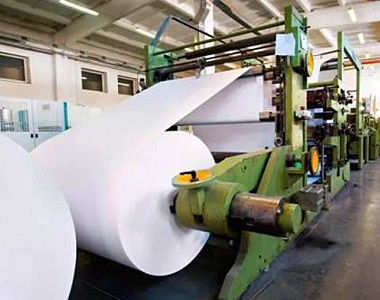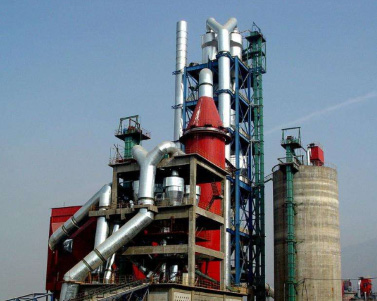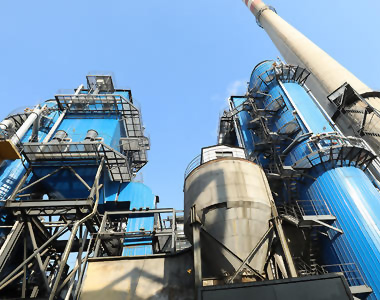
Adopting advanced lubrication technology is a shortcut to energy conservation and consumption reduction during equipment operation. It is a science that basically does not increase investment, but increases wealth, which has been extensively proven by facts.
At present, the production capacity of lubricating oil in China is second only to the United States and Russia, and can produce 19 major categories and 600 varieties of lubricating oil. However, there is still a certain gap compared to the production of 1000-1500 types of lubricating oil abroad.
設(shè)備管理-潤(rùn)滑管理,延長(zhǎng)設(shè)/8d73e8efd46a1506504697de9388297b.jpg)
But the real gap between us and the world's advanced level lies in our understanding, comprehension, and use of lubricants. Below, we will introduce the basic knowledge of lubricating oil, the importance of equipment lubrication, and the development direction of lubricating oil to readers. We will provide some suggestions for the current use of lubricating oil in China's oilfield enterprises.
潤(rùn)滑油及液壓油特性/307d30f770414b96e0457441d4f64e7a.jpg)
1、 Basic knowledge of lubricating oil
1. General classification of lubricating oils
The general classification of lubricating oils in our country is based on the application scenarios of lubricants. The current national standard is GB 7631.1-87 "Classification of Lubricants and Related Products (Class L) Part 1: General Grouping". This standard is equivalent to using international standards.
Table 1 Classification of Lubricants and Related Products (Class L)
設(shè)備管理-潤(rùn)滑管理,延長(zhǎng)設(shè)/2d0f5dd0e5afaa6b72fb083d3d5b8f25.jpg)
2. Internal combustion engine oil
According to GB 3141-94 "ISO viscosity classification for industrial liquid lubricants" standard. At 40 ℃, there are 20 levels of internal friction resistance based on the range of kinematic viscosity (mm2. s-1): 2, 3, 5, 7, 10, 15, 22, 32, 46, 68, 100, 150, 220, 320, 460, 680, 1000, 1500, 2200, 3200.
(1) Basic performance of internal combustion engine oil
With the continuous improvement of internal combustion engine performance, the working conditions of lubricating oil are becoming increasingly stringent. In addition, the management of exhaust emissions and the requirements for safety are becoming stricter, and the requirements for the performance of internal combustion engine oil are also increasing. Therefore, different varieties of internal combustion engine oil have different performance.
But the basic performance is roughly the same, that is, it has good viscosity and temperature properties; Appropriate viscosity; Strong antioxidant capacity; Good thermal stability; Good cleanliness and dispersibility; Good lubricity; Wear resistance; Good foam resistance.
(2) Classification of internal combustion engine oil
There are two types of classification for internal combustion engine oil, one is based on performance, and the other is based on viscosity. Therefore, the classification of each type of internal combustion engine oil includes two aspects: performance category and viscosity classification.
① Using performance classification
The performance classification (also known as quality classification) for internal combustion engine oil, which is currently commonly used internationally, is the classification of the American Petroleum Institute (API). It was jointly developed by the Society of Automotive Engineers (SAE), the American Society for Testing and Materials (ASTM), and API. Mainly divided into gasoline engine oil and diesel engine oil. The engine oil variety code starts with the letter S and is divided into SA, SB, SC, and SD according to quality grade as gasoline engine oil; Starting with the letter C, diesel engine oil is classified into CA, CB, CC, and CD according to quality grade.
② Viscosity classification
The current internationally recognized viscosity classification is the American Petroleum Institute (API) classification. It is a viscosity classification jointly proposed by the Society of Automotive Engineers (SAE), the American Society for Testing and Materials (ASTM), and API. China's GB/T 14906-94 adopts this viscosity classification standard, which is divided into 10 types of single grade oils, namely viscosity grade numbers: 0W; 5W; 15W; 20W; 25W; 20; 30; 40; 50; 60.
③ Universal engine oil for gasoline and diesel, as well as year-round universal engine oil.
The gasoline engine oil code and diesel engine oil code have different positions before and after the engine oil variety code, and the focus of lubricating oil use is different, such as:
SF/CD10W/20 focuses on gasoline engines, and diesel engines can also be used. Suitable for units with gasoline engines as the main engine and a very small number of diesel engines.
CD/SF10W/20 focuses on diesel engines, and gasoline engines can also be used. Used in units with diesel engines as the main engine and a very small number of gasoline engines.
Annual universal engine oil refers to non Newtonian fluids (multi-stage oils), which are mainly characterized by good low-temperature fluidity and good viscosity, meeting the requirements of high environmental temperatures and a wide range, and can be used throughout the year.
④ The current situation of the use of engine oil in China.
Gasoline engine oil has evolved from the SA grade in 1940 to the current SJ grade gasoline engine oil, with an average upgrade every 4-5 years over the past 20 years, resulting in better performance each time. And diesel engine oil has evolved from CA grade to CF-4 grade.
SH/GF-1 has been widely used as gasoline engine oil in foreign countries, and SJ/GF-2 is soon becoming popular. Less than 2% of SF grade engines are available in the Chinese market; Diesel engine oils such as CE, CF, and CF-2 have been widely used in foreign countries, while CA has not been completely phased out in the Chinese market. CC grade is still the main type of diesel engine oil (46.41%), and energy-saving multi-stage oil is less than 20%.
設(shè)備管理-潤(rùn)滑管理,延長(zhǎng)設(shè)/9b9cee85b630054499619c2219159d22.jpg)
3. Gear oil
Gear oil is used to lubricate gears, including worm gear and worm gear pairs. Its main function is to provide lubrication and cooling between the meshing tooth surfaces, reduce friction and wear, as well as mitigate impact and vibration, prevent corrosion and rust, and clean the dust particles and pollutants on the friction surface.
(1) The main performance of gear oil
Appropriate viscosity; Good extreme pressure and wear resistance; Good antioxidant stability; Good shear stability Good foam resistance; Good rust resistance; Good anti emulsification performance.
(2) Classification of gear oil
According to the classification standard GB/T7631.7-1995 "Classification of Lubricants and Related Products Part 7: Group C", gear oil can be divided into three categories: industrial gear oil, vehicle gear oil, and industrial open gear oil.
The gear oil currently in use has added extreme pressure and anti-wear additives. The oil is chemically adsorbed on the metal surface, and its strength has increased by 5-10 times compared to physical adsorption. There is no longer any oil that cannot reach the meshing area.
Low viscosity and high-grade GL-5 vehicle gear oil should be selected for vehicle gear oil; Industrial gear oil is developing towards energy-saving, synthetic gear oil, and environmental protection. It is also the goal pursued by industrial gear oil to appropriately reduce the viscosity of the oil while ensuring effectiveness and reliability.
4. Hydraulic oil
Hydraulic oil is an important component of hydraulic technology. In hydraulic systems, it plays a role in energy transfer, system lubrication, rust prevention, and cooling.
In 1994, China issued the GB1111.81-94 hydraulic standard, which includes five varieties of products: HL, HM, HV, HS, and HG.
HL is an anti oxygen and anti rust hydraulic oil used in general machine tools; HM is an anti-wear hydraulic oil with outstanding anti-wear performance. HV and HS are used in low-temperature hydraulic cold regions; HG is hydraulic guide rail oil.
潤(rùn)滑油及液壓油特性/c38042b5a4b345ac15d2ba5672ad4afe.jpg)
潤(rùn)滑油及液壓油特性/307d30f770414b96e0457441d4f64e7a.jpg)
IIThe significance of equipment lubrication and oil monitoring
According to domestic and foreign data reports, over 60% of equipment failures are caused by poor lubrication, and over 80% of hydraulic equipment failures are caused by hydraulic oil. The main reason is contamination of the lubricating oil during use and improper selection of oil products.
Modern equipment requires precise accessories and precise assembly, which sets higher standards for lubrication of various moving parts. Therefore, the correct and reasonable use and maintenance of lubricating oil is an effective way to reduce equipment failures.
The traditional equipment maintenance methods are post failure repair and periodic maintenance, while advanced equipment maintenance methods are predictive maintenance and repair systems based on condition monitoring. A survey on the application of predictive maintenance in the United States shows that oil analysis accounts for 82% of the monitoring techniques used.
Regularly monitoring the lubricating oil of the equipment can accurately locate the affected area, identify problems, and provide targeted treatment.
Traditional lubrication management often measures the viscosity, moisture, acidity, mechanical impurities, and other factors of oil products, but its purpose is to understand the working status of the oil products and determine whether to change them.
The purpose of modern management and oil monitoring is to observe the deterioration trend of oil products through oil analysis and inspection methods, collect information, and take targeted measures to eliminate accidents and prevent accidents, ensuring long-term stability and good operation of equipment, and thus extending its service life.
潤(rùn)滑油及液壓油特性/307d30f770414b96e0457441d4f64e7a.jpg)
threeCurrent situation of equipment lubrication in petroleum enterprises
1. The equipment uses internal combustion engine oil with a low level in winter
The grade of internal combustion engine oil selected for equipment in northern high-altitude regions in winter is relatively low, especially for some special equipment that does not use oil with a grade of 100000 or above, and uses oil such as CD30, which cannot meet winter use, accelerates the wear of various components of the equipment, and reduces the service life of the equipment.
2. Mixing gasoline and diesel engines with a lubricating oil
The phenomenon of using diesel internal combustion engine oil in individual gasoline internal combustion engines. Due to the fact that most gasoline internal combustion engines are equipped with domestically produced medium-sized trucks, some units do not use a large quantity, and gasoline engine oil is not easy to purchase, so diesel engine oil is directly used.
3. Insufficient oil testing instruments and professional testing personnel
Lack of specialized, high-precision, and fast testing small testing equipment, as well as personnel familiar with the basic knowledge of lubricating oil and proficient in the oil testing process.
4. Lack of "equipment lubrication doctor"
Due to the lack of composite technical talents who understand both lubrication technology and equipment technology, many enterprises lack departments and management personnel who can guide and establish the correct use of equipment lubricating oil, resulting in chaotic oil usage.
5. Oil monitoring is not timely, and regular oil changes are still the main approach
There is still a situation where the equipment mainly relies on regular replacement of lubricating oil, and monitoring and quality based oil replacement methods are not implemented, resulting in equipment failures that cannot be prevented in advance and increased maintenance costs.
6. Some professional equipment maintenance and consumables (three filters) procurement are not smooth
Due to the large number of equipment manufacturers and diverse types of equipment, the purchased equipment does not have after-sales maintenance service stations in the local area, or due to the manufacturer or maintenance station not being certified by the petroleum enterprise network, the equipment cannot be repaired in a timely manner when it malfunctions.
However, the purchase of original accessories (such as filters) is not smooth, resulting in the inability of newly purchased equipment to maintain and troubleshoot on schedule, thereby increasing the early wear and tear of the equipment and reducing its service life.
潤(rùn)滑油及液壓油特性/307d30f770414b96e0457441d4f64e7a.jpg)
4Management of lubricating oil for equipment
1. Develop oil standards for enterprises
The equipment management department formulates low oil standards for the enterprise based on the existing equipment and the current development status of the equipment, and formulates a "lubricant usage standard table" according to the type, specification, model of the equipment and the different types and levels of lubricating oil currently available, gradually standardizing and improving the oil usage standards of the enterprise.
2. Establish lubrication oil filling, recycling, and monitoring stations, and promote equipment "regular monitoring and oil replacement according to quality"
Foreign enterprises generally promote specialized maintenance services, advocating the abandonment of the production management model of large and comprehensive, small and comprehensive, and the establishment of specialized lubricating oil monitoring institutions to regularly monitor new and old lubricating oils, and publish testing reports. Each enterprise shall establish a lubricating oil management and monitoring center according to its scale.
Establish equipment lubricant usage records using computer network systems, with dedicated personnel responsible for daily maintenance and monitoring. While carrying out regular oil monitoring and quality replacement of equipment lubricant, carry out monitoring of lubricant, diagnose equipment technical conditions, and take measures to ensure long-term good operation of equipment.
Establishing a lubricating oil management and monitoring center is not only responsible for the filling, monitoring, and use management of lubricating oil, but also for the recycling management of waste lubricating oil. Our branch company purchases around 120 tons of various lubricants annually, and the entire oilfield company consumes tens of thousands of tons of lubricating oil annually. The amount of waste lubricating oil that can be recovered can also reach several thousand tons. The benefits of its recycling and reuse are considerable, and it also avoids the serious pollution caused by the dumping of waste liquid on the formation.
3. Strengthen the process control of equipment lubricating oil use and extend the service life of lubricating oil
The gradual deterioration of lubricating oil during use is inevitable, mainly due to internal and external pollution of the oil. Internal pollution mainly refers to iron chipping, impurities, sludge, and oxides during the use of oil products; External pollution mainly refers to water and mechanical impurities entering from the outside.
How to ensure the cleanliness of lubricating oil? The direct and effective way to reduce the rate of oil degradation is to replace qualified filter elements in a timely manner and strengthen equipment maintenance.
The NADC, also known as the Naval Aviation Research Center of the United States, conducted a 250h operation experiment on a plunger pump using 1 μ m, 5 μ m, and 15 μ m filters. The experimental results showed that the components using 1 μ m ultrafiltration had almost no wear, reducing wear by 74% compared to using 5 μ m filters and 92% compared to using 15 μ m filters. However, the loss of components using 5 μ m filters was reduced by 81% compared to using 15 μ m filters.
Therefore, using high-precision filters is an effective method to ensure the cleanliness of lubricating oil and reduce equipment wear.
4. Improve the oil standards of equipment
Newly purchased production equipment, especially imported or special, large, precision, and rare equipment, must strictly follow the requirements for the use and maintenance of lubricating oil from the beginning of use, and cannot lower the standards for the use of its oil.
Due to improper use and untimely maintenance of lubricating oil in the early stage, equipment wear and tear cannot be compensated for by subsequent maintenance.
5. Strengthen training for equipment and lubricant management personnel
Plan and organize training for equipment management and lubricant management personnel in a hierarchical manner to improve the oil usage level of enterprise equipment. Writing "Equipment Lubricating Oil Common Sense" and distributing it to equipment lubricating oil management and operators for publicity and learning is an effective means to improve the level of equipment lubricating oil management.
Emphasizing lubrication management and extending equipment life are effective means to promote equipment management work.
潤(rùn)滑油及液壓油特性/307d30f770414b96e0457441d4f64e7a.jpg)
5: Effective solutions for online waste oil and waste oil recovery
Large equipment has a long operating time, and the replacement of lubricating oil and hydraulic oil is relatively cumbersome, with high replacement costs and low efficiency. To avoid affecting the normal operation of the equipment, online or offline centrifugal oil filter equipment can be selected.
The fluid disc separator (centrifugal oil filter) of Jiangxi Meifei Environmental Protection Technology Co., Ltd. is an efficient centrifugal oil filter designed, developed, manufactured, and sold for industrial oil. Its working principle is to use the characteristics of different substance densities to achieve rapid separation of various solid, liquid, and gaseous pollutants (such as water and impurities in oil) that are higher than the oil density through centrifugal separation.
設(shè)備管理-潤(rùn)滑管理,延長(zhǎng)設(shè)/44628007de9d5d209438fb0ba3d85c89.jpg)
潤(rùn)滑油及液壓油特性/307d30f770414b96e0457441d4f64e7a.jpg)
6: Oil filter workflow
After entering the inlet pipe of the centrifugal oil purifier from the oil tank, the oil flows along the sealing framework towards the top of the centrifugal cylinder under negative pressure. After it fills the entire cylinder chamber, the centrifugal cylinder begins to work. Under the action of centrifugal force, the oil rotates at high speed to separate dense particles, which then flow along the cylinder wall to the pollution collection box; The preliminarily purified oil is squeezed into the disc under pressure, filtered layer by layer on the disc to obtain secondary purification, finally discharged from the oil pipe, and pumped back to the oil tank through pressure, completing a filtration cycle.
設(shè)備管理-潤(rùn)滑管理,延長(zhǎng)設(shè)/b55d31efb7bcb79fb8b70b5b22548a8f.jpg)
The Meifel centrifugal oil filter has advantages such as no need for consumables, high-speed automatic continuous drainage, wide applicability, convenient movement, online and offline applicability, and multifunctional protection. Widely used in modern industry in industries such as steel, electricity and wind power, chemical, shipbuilding, machinery manufacturing, papermaking, plastics, ceramics, and environmental protection. Suitable for purifying and separating hydraulic oil, lubricating oil, gear oil, and oil film bearing oil with viscosity ranges from 25 # to 460 #.
Statement: The articles, pictures and videos published on the official account are all used for learning and exchange. The articles come from the network and the copyright belongs to the original author. If there are any questions about the content, copyright and other issues of the works, please contact us in time to delete them!
備故障診斷技術(shù)中,油液監(jiān)測(cè)和/6327a6671f6090639ebf31832d721603.jpg)
Phone: 0795-3698688
Fax: 0795-3698688
Email: MFR_2019@163.com
Tiktok: MFR6860088
Address: Building 16, Lithium Battery New Energy Industrial Park, Industrial Avenue, Binjiang Town, Yuanzhou District, Yichun City, Jiangxi Province

微信截圖_17276036726258.png)




E-mail:MFR_2019@163.com
Address:Building 16, Lithium Battery New Energy Industrial Park, Industrial Avenue, Binjiang Town, Yuanzhou District, Yichun City, Jiangxi Province
